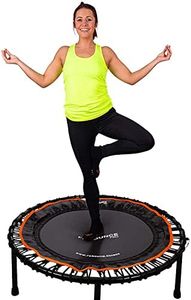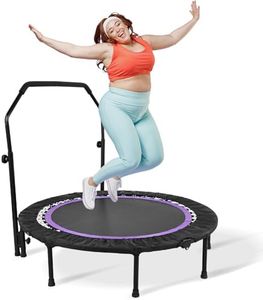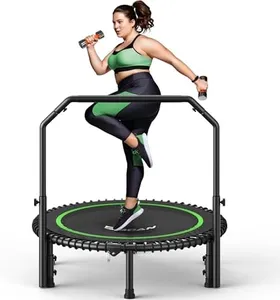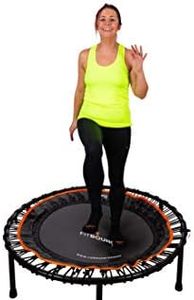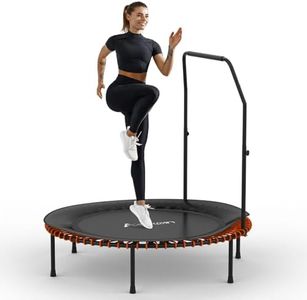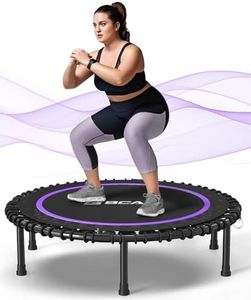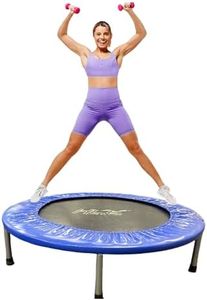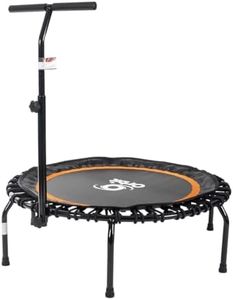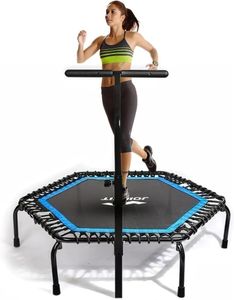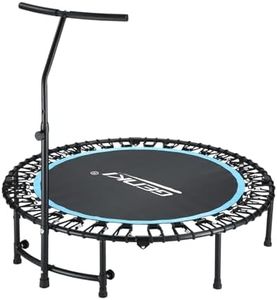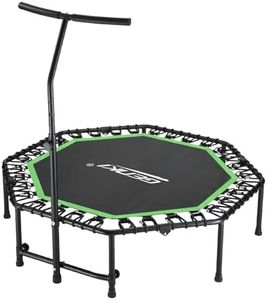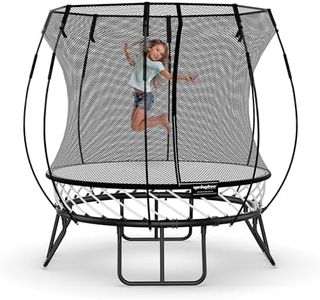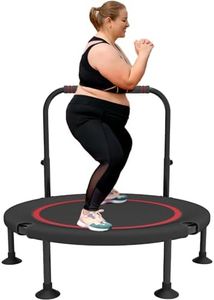We Use CookiesWe use cookies to enhance the security, performance,
functionality and for analytical and promotional activities. By continuing to browse this site you
are agreeing to our privacy policy
10 Best rebounder
From leading brands and best sellers available on the web.By clicking on a link to a third party's website, log data is shared with that third party.
Buying Guide for the Best rebounder
Choosing the right rebounder (also known as a mini trampoline) is all about matching the product to your fitness goals, space, and expected usage. Rebounders are popular for both gentle workouts and more intense cardio routines, and the right choice can help improve your balance, coordination, and cardiovascular health. It’s important to consider how you’ll use your rebounder, where you’ll set it up, and what types of exercises you plan to do. Focusing on the main specifications can help you select a rebounder that’s comfortable, safe, and enjoyable to use.Size (Diameter)Size in terms of diameter refers to how wide the rebounding surface is. Smaller rebounders (around 36-40 inches) are great for tight spaces and easy storage, while larger options (more than 40 inches) provide more room for jumping and allow for a greater variety of exercises. If you plan to do basic bouncing or have limited space, a smaller diameter might work best for you, but if you want to move around more or feel more stable, consider a larger surface.
Weight LimitThe weight limit indicates the maximum user weight that the rebounder can safely support. This spec is crucial for safety and product durability. Lower limits (up to 200 lbs) are common on budget or lightweight models, while higher-end options often offer limits of 250 lbs or more. Always choose a rebounder with a weight limit above your own weight to ensure longevity and safe enjoyment.
Bounce System (Springs vs. Bungees)Rebounders generally use either metal springs or elastic bungee cords to create bounce. Springs tend to provide a firmer, higher bounce, which suits energetic workouts, but may be noisier. Bungee cords offer a quieter, softer, and lower-impact bounce, which is better for joint health and rehabilitation. Choose springs if you prefer a traditional trampoline feel and plan high-impact workouts, but go for bungees if gentle, silent, or joint-friendly use is your priority.
Stability and Frame ConstructionFrame strength and stability are crucial for safe exercise. Frames made from strong steel with sturdy legs provide the best stability and resist warping. Some rebounders include additional safety features like non-slip feet or stabilizing bars. If you’re new to rebounder workouts or value extra support, look for models with stability features or a sturdier build.
Portability and StorageHow easy it is to store or transport your rebounder is defined by whether it folds up and how heavy it is. Foldable or lightweight rebounders are ideal if you have limited space or want to take your rebounder to different locations. However, more portable designs can sometimes sacrifice stability. Choose based on your space and whether you need to move the rebounder often.
Surface Material and PaddingThe quality of the jumping mat and any extra padding around the edges ensures comfort and security. Look for mats made from durable, UV-resistant materials that won’t stretch out easily. Adequate padding on the edge helps protect you from the springs or bungees if you step near the edge. For family or shared use, extra padding increases safety.
